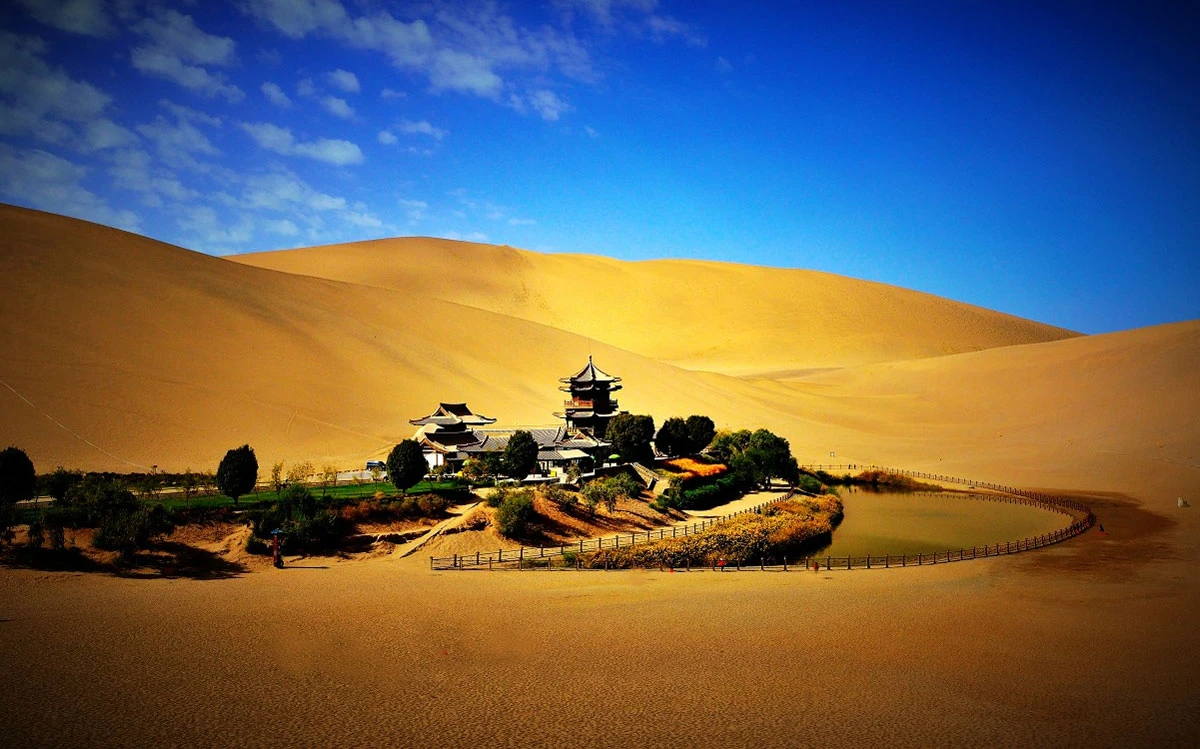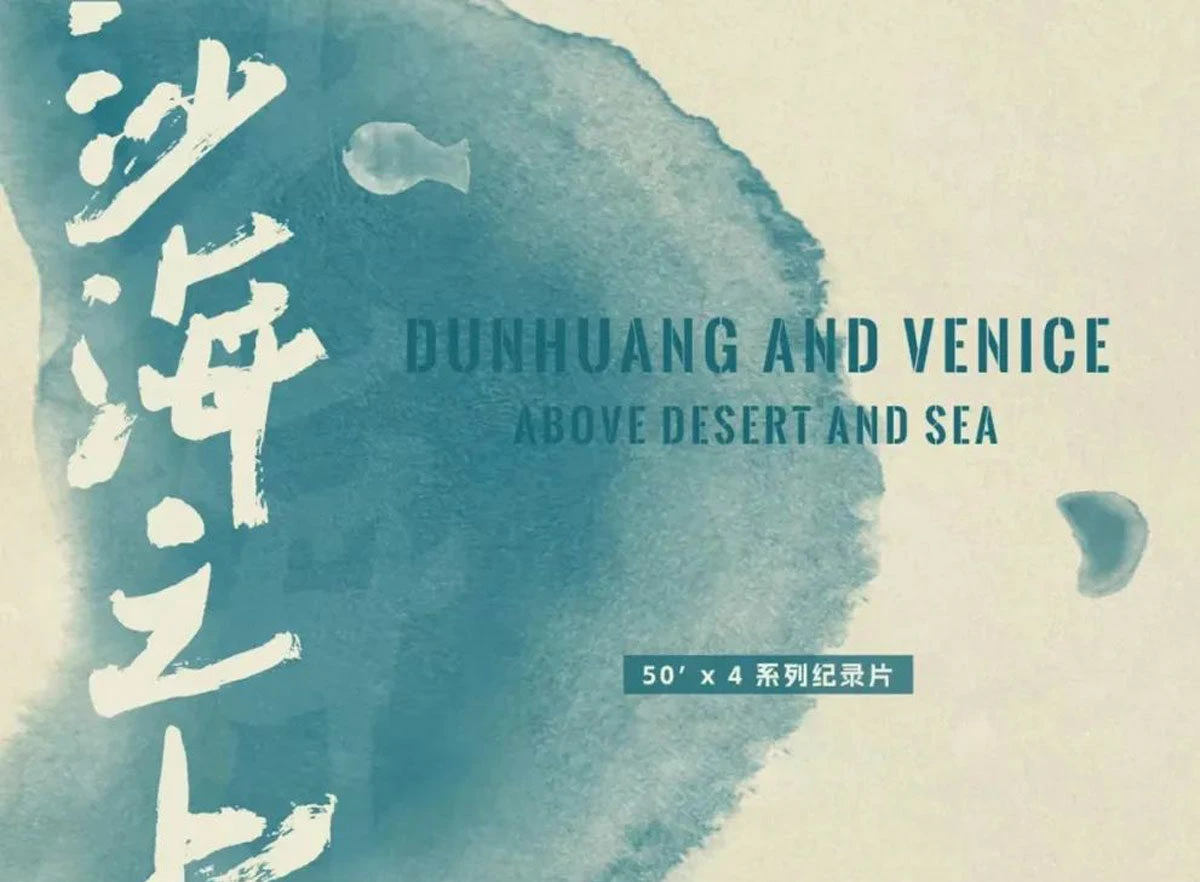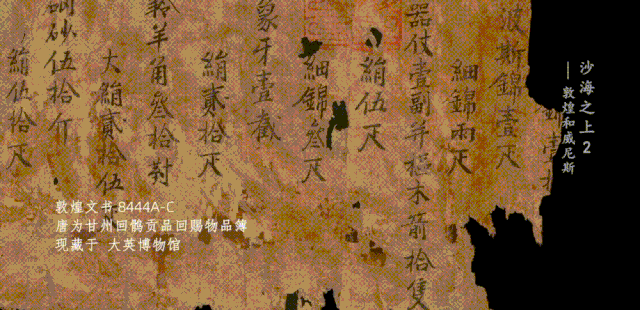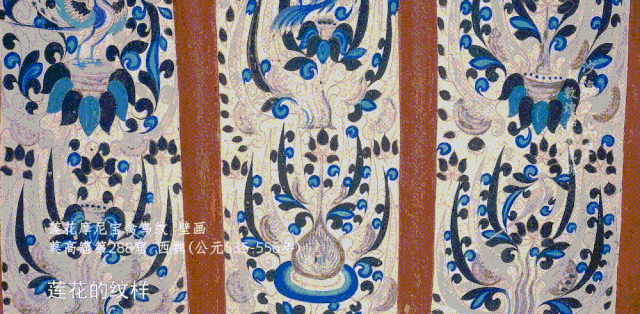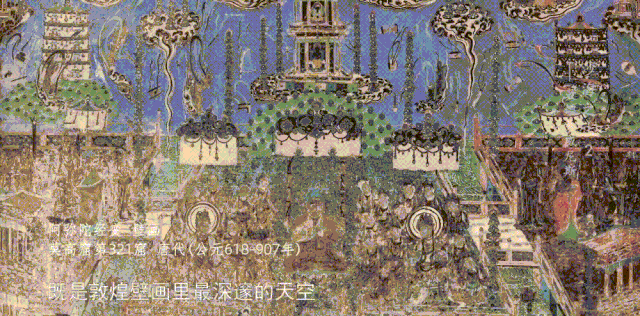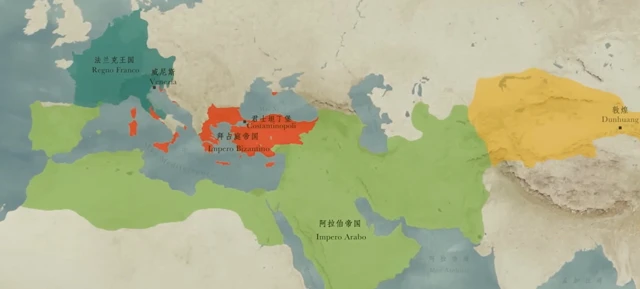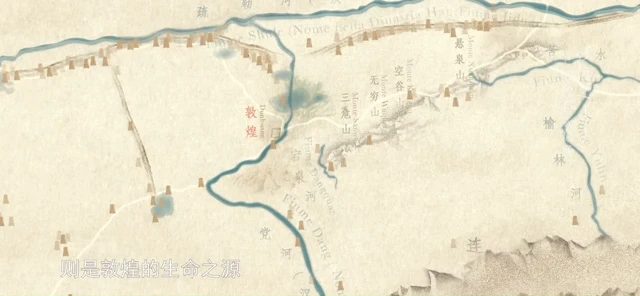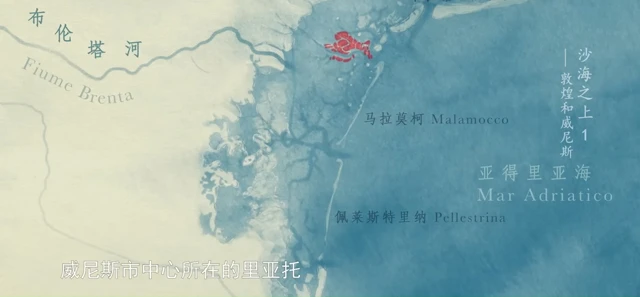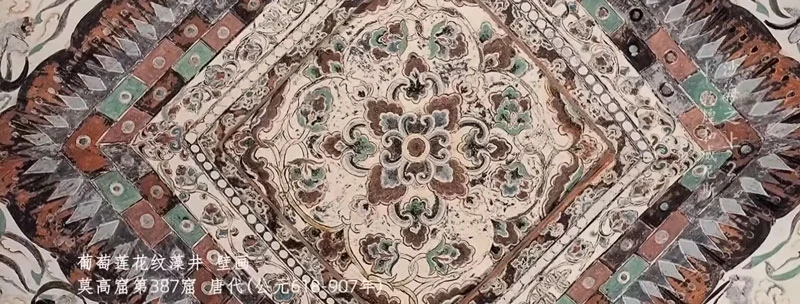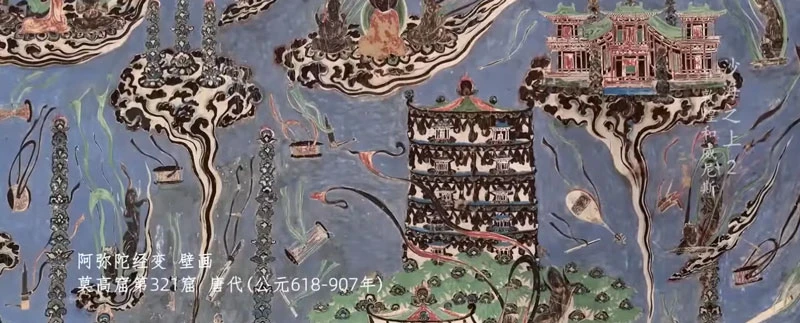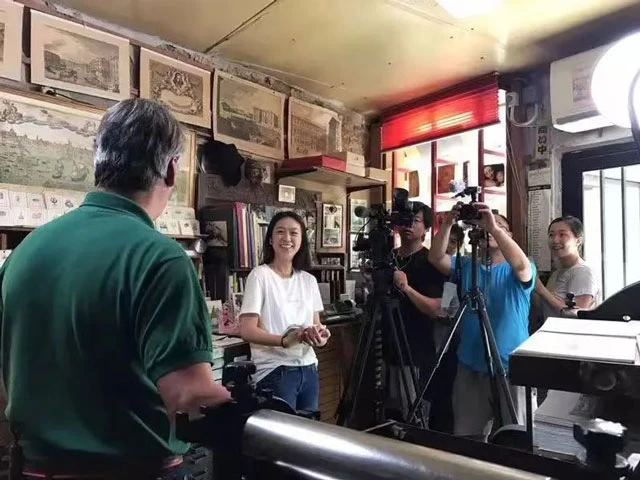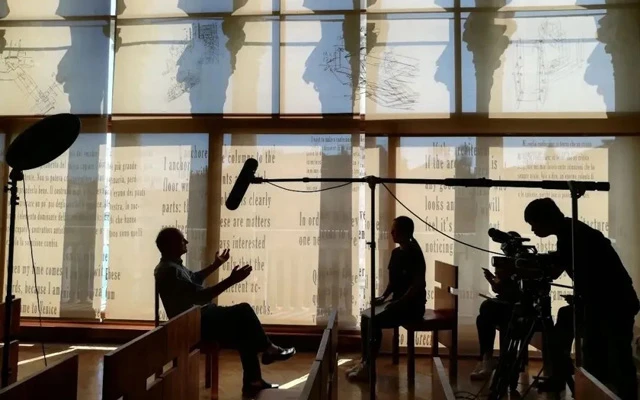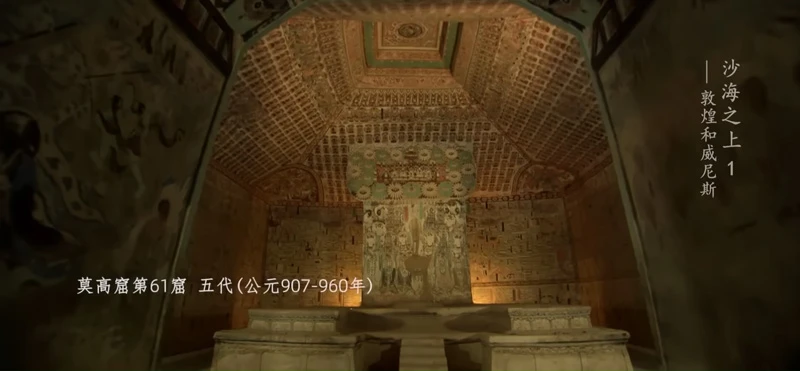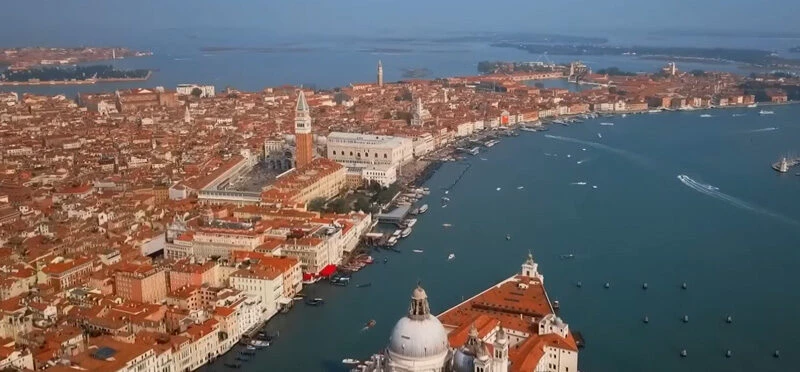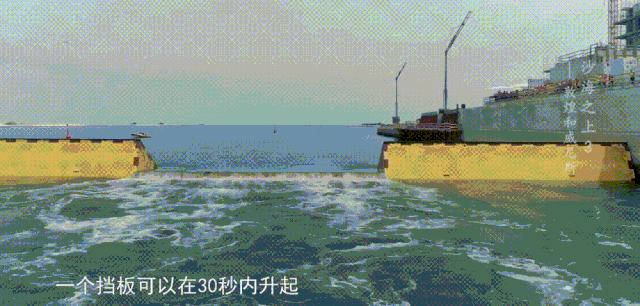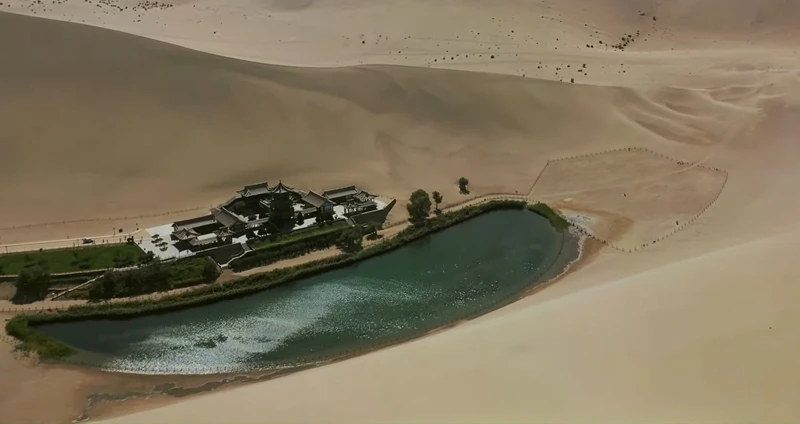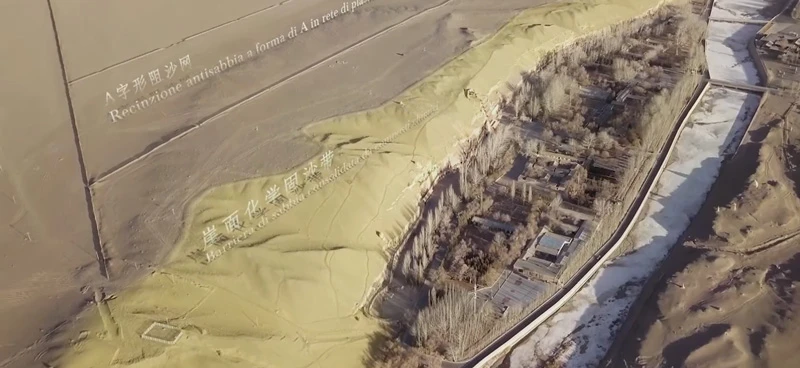At the end of 2022, a documentary with only four episodes went online, "Dunhuang and Venice: Above Desert and Sea".
Perhaps Marco Polo's visit to China is the only positive encounter between Dunhuang (敦煌) and Venice in history. They reunited with a new look in this documentary. From east to west, from sand to sea, the Silk Road conveys the most wonderful exchange of materials, culture and people.
East Meets West
In 1271, Marco Polo set out from Venice for a long journey and crossed 6,400 kilometers of sand and sea. In his travelogue, he noted down a place called sandbank, which was Dunhuang.
In the long river of history, the two seemingly completely irrelevant cities have more connections because of the Silk Road. For example, the cotton weaving of Persia appeared in Dunhuang Tang Dynasty documents and also appeared beside the governor of Venice.
The pattern of lotus appeared in the Mogao Grottoes and also in the gorgeous clothes of the Madonna.
Lapis lazuli from Afghanistan is not only the profoundest sky in Dunhuang frescoes but also the purest blue in Titian's works.
Many traders may not travel the entire length of the Silk Road, but one short trip after another is enough to create many connections between the two cities. Dunhuang and Venice, in the moving sand and sea, one in the sand to live by finding the water, the other in the water to solidify the earth as a city.
The rivers flowing from the Qilian Mountains nourish the oases and lakes, in which is Dunhuang located. The earliest Dunhuang County was surrounded by beacon towers. This tight and efficient early warning system can also be regarded as the trend of the Great Wall in the Han Dynasty.
Compared with Dunhuang which was established in 111 BC, people lay wooden stakes in Rialto in 810 AD and began to build the maritime city Venice. The first people to live here were fishermen who made a living by fishing. Later, because of the uninhabited beaches and unpredictable swamps, it became a sanctuary for many people to flee the war.
It happens that there is a similar case, Dunhuang is also a refuge for many ancient people. Among the immigrants in Dunhuang, there were soldiers for guarding the border, criminals who had been banished, and people who had migrated due to the complete collapse of their native land.
The Mogao Caves were born in order to give them a refuge in their hearts, and the so-called Gong Yang Ren (供养人, supporter, devotee who promotes the teachings of a religion by providing money, goods or labor to make icons, dig grottoes, build religious sites, etc.) are the traces of the ancient Dunhuang people.
These two cities, which are in an extreme geographical environment and neglected by people, have become new homes for people with such an inclusive attitude.
Origin of Dunhuang and Venice: Above Desert and Sea
As the first documentary that explains and compares the two ancient cities from different types, and from the perspective of historical geography and anthropology, it is not easy to shoot. The creation team spanned a distance of more than 6,000 kilometers, visited dozens of civilized sites and different natural physiognomy. After six years of a long time, this documentary blockbuster was finally available.
Whether in the history or in the filming, the stories are a learning and intermingling that allows these two very different cities to be understood, embraced and seen. To restore the memories that belong to them, the creators also consulted tens of thousands of historical materials that are composed of more than a dozen languages through dozens of museums, libraries, art galleries and other institutions.
It is also because of such a rigorous attitude that cross-cultural communication was accidentally obtained in this shooting. In addition to the academic support of Dunhuang Research Institute and the University of Venice, more than 40 professionals from all over the world appeared in the documentary.
Seeing Dunhuang and Venice from different angles makes the documentary as rich as these two inclusive cities. These rigorous academic views coupled with hand-drawn animations add the documentary a little more playful.
Actually the shooting opportunity point of this documentary comes from the cooperation between Dunhuang and Venice: In 2017, the Dunhuang Academy, the Dunhuang Cultural Promotion Fund and the University of Venice Foundation signed a memorandum of cooperation titled "Dunhuang in Venice"; In 2018, the exhibition "Jewel of the Silk Road: Buddhist art from Dunhuang" was held in the exhibition space of the University of Venice. With the continuous overlap between Dunhuang and Venice, this novel documentary was also born.
Cultural Wonders in Thousand-year Old City
The architectural aesthetic scholar Song Lingqi believes that Dunhuang and Venice originated from barren places in the natural sense. Their different brilliant cultures blend in different times and spaces, eventually forming such a great urban civilization.
Indeed, because of the integration of different groups, both Dunhuang and Venice have rich details from architecture to culture. In the boundless yellow sand, the ruins of Dunhuang's old city and Mogao Grottoes all exude a cultural atmosphere; in the rippling water, Piazza Venice and Saint Mark's Basilica all show the art atmosphere.
Whether it is ancient cultural heritage or urban architecture, their use of land and sea is so creative, and they also face serious problems from environmental damage.
At the end of the 18th century, huge sea walls were built to stop seawater invasion. However, with the rise of sea levels, this wall can no longer block the turbulent sea. As early as 1966, an unprecedented storm kept the seawater pouring up from the bottom of the city. Venice was greatly damaged, and many works of art and archives of academic and historical significance were destroyed. Being submerged by the sea became a dilemma that Venice needed to face.
This thousand-year-old ancient city cannot be rebuilt or relocated. In 2003, Venice launched the MOSE Project. This wrestling with nature reveals boldness and courage everywhere. In 2020, the MOSE Project is completed and the miracle still needs time to be verified.
Dunhuang's dilemma is exactly the opposite of Venice’s, what Dunhuang lacks is water. Yueya Spring, located in Singing Sand Dunes, showed beauty to everyone who came to Dunhuang since the 3rd century. Because its water level rises and falls synchronously with the water level of Dunhuang groundwater, Yueya Spring also carries the fate of Dunhuang: "If the Yueya Spring dries up, Dunhuang will become a desert." However, the water of the Yueya Spring is still decreasing day by day.
In 1944, the Chinese Dunhuang Art Research Institute was established, which started preserving the grottoes. Cleaning up the sand accumulation is an important task. For a long time, it needs to be cleaned up every year. To solve this dilemma, desertification control personnel erected sand-blocking fences and laid more than 1 million square meters of grass-checkered sand barriers to cut off the sand source. From the 1980s to 2011, the sand control personnel set up six desertification control lines in turn, which has become a new landscape.
In this way, the cultural heritage protection of Dunhuang and Venice has always been carried out. They are the memory of civilization and the root of the nation. In this process, cultural exchanges between China and the West never stopped.
Marco Polo spent a long time measuring the distance between the two ancient cities by footstep. Now it takes about 15 hours to shuttle between the two cities by plane, but even farther away, the cultural exchange between the two cities will not end, achieve a new romantic and achieve spiritual immortality.
